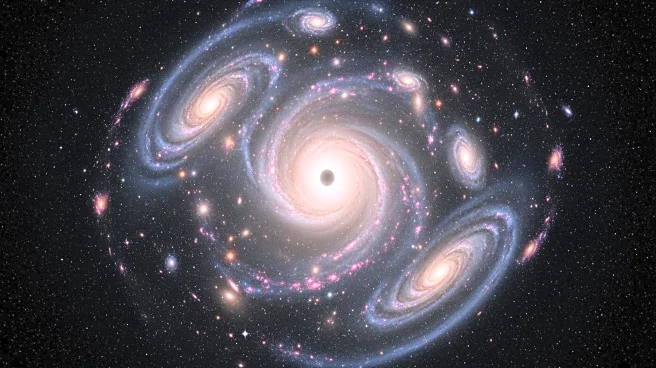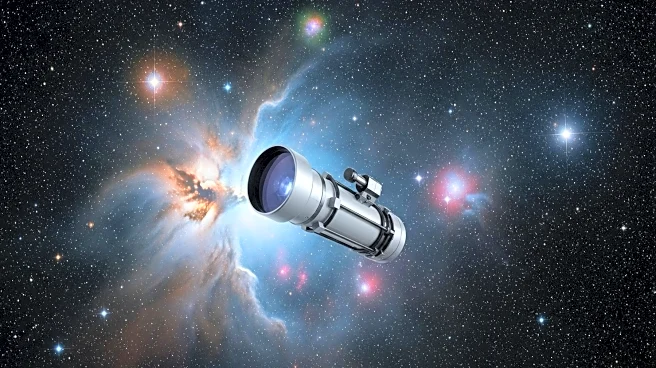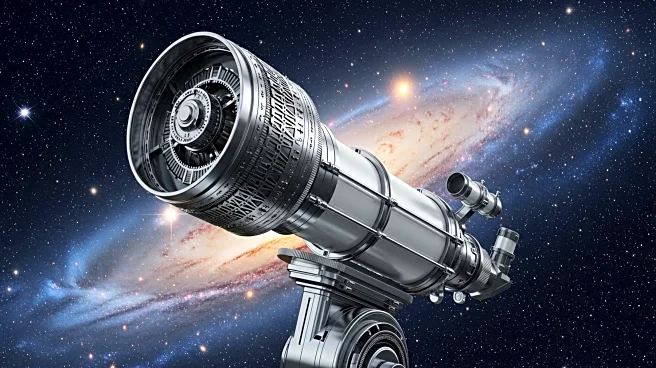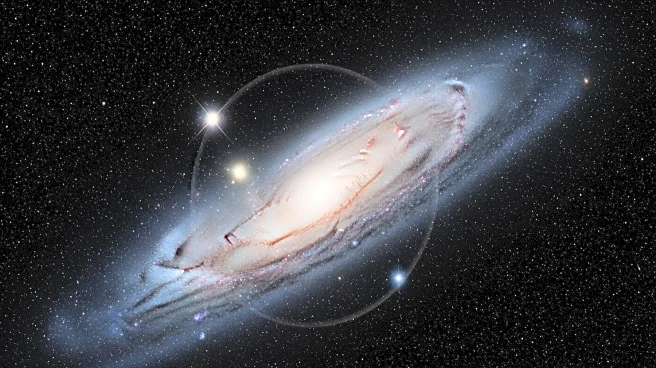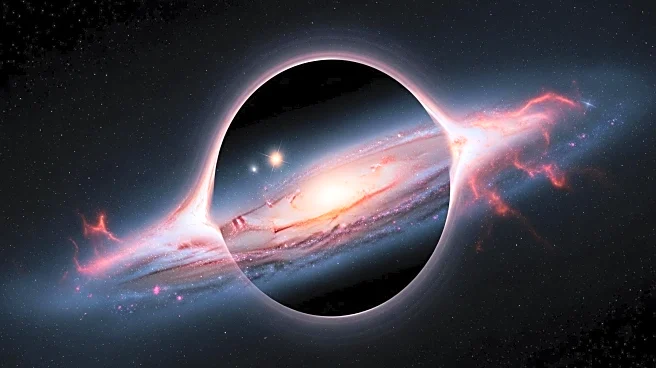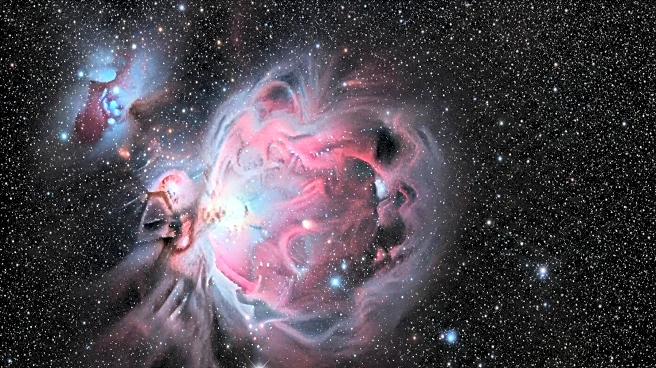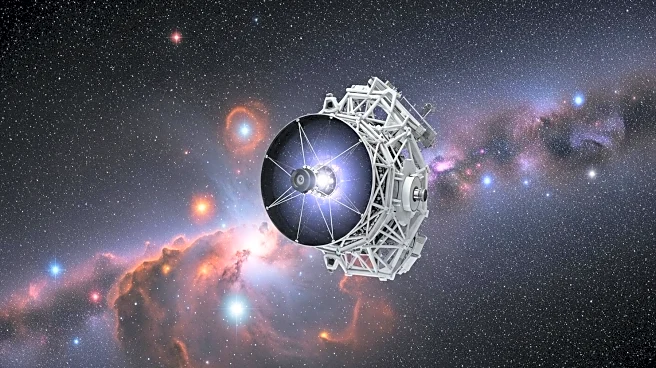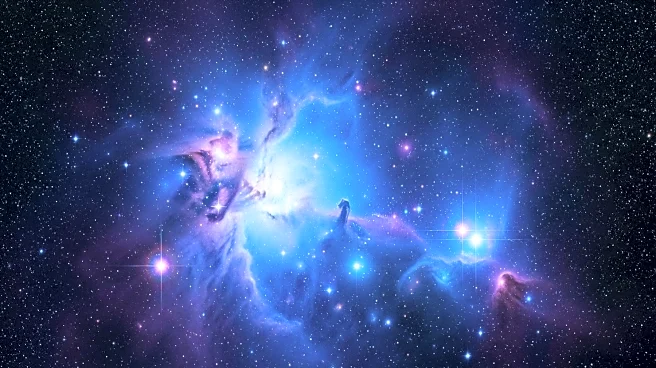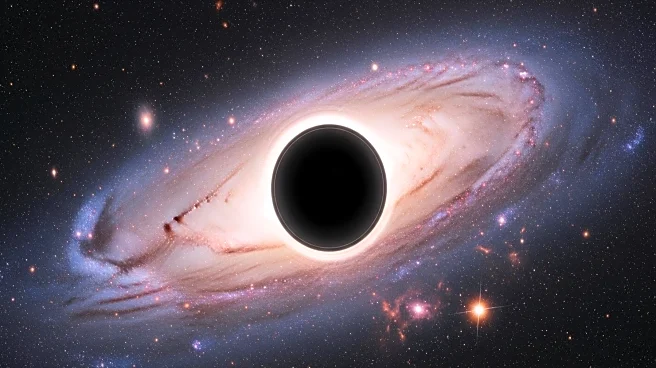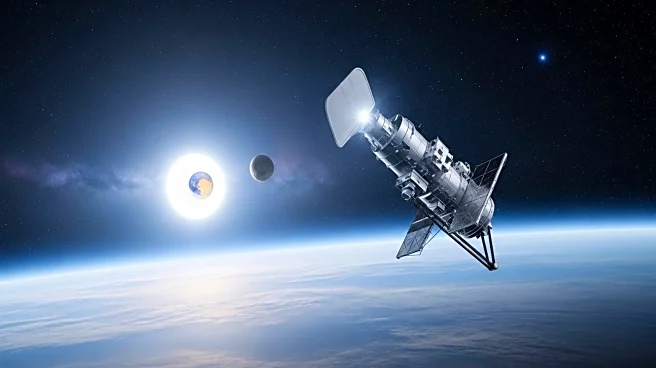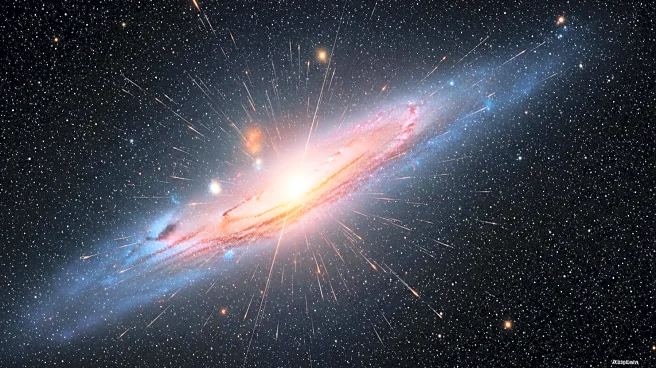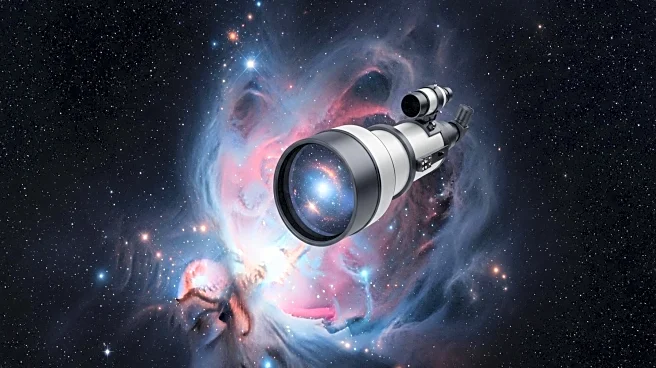What is the story about?
What's Happening?
Recent research led by Lior Shamir, a professor at Kansas State University, suggests that the universe might be trapped inside a black hole. Utilizing data from the James Webb Space Telescope, Shamir analyzed galaxy rotations and found an unexpected asymmetry, with more galaxies rotating clockwise than counterclockwise. This finding challenges existing cosmological theories and supports the idea of black hole cosmology, which posits that the universe could be the interior of a rotating black hole. The study calls for a reevaluation of the Milky Way's motion in cosmological measurements.
Why It's Important?
This research could have profound implications for our understanding of the universe's structure and origins. If the universe is indeed inside a black hole, it would necessitate a revision of current cosmological models and theories. Such a discovery could impact various scientific fields, including astrophysics and theoretical physics, by providing new insights into the nature of space-time and the universe's expansion. It may also influence future space exploration and research priorities, as scientists seek to verify and understand these findings.
What's Next?
The study encourages astronomers to reconsider the Milky Way's motion in their measurements, which could help resolve discrepancies in the universe's expansion rates and the age of large galaxies. Further research and observations using advanced telescopes like the James Webb Space Telescope are expected to continue, potentially leading to new discoveries that could either support or refute Shamir's theory. The scientific community may engage in debates and discussions to explore the implications of these findings and their impact on existing cosmological models.
AI Generated Content
Do you find this article useful?
